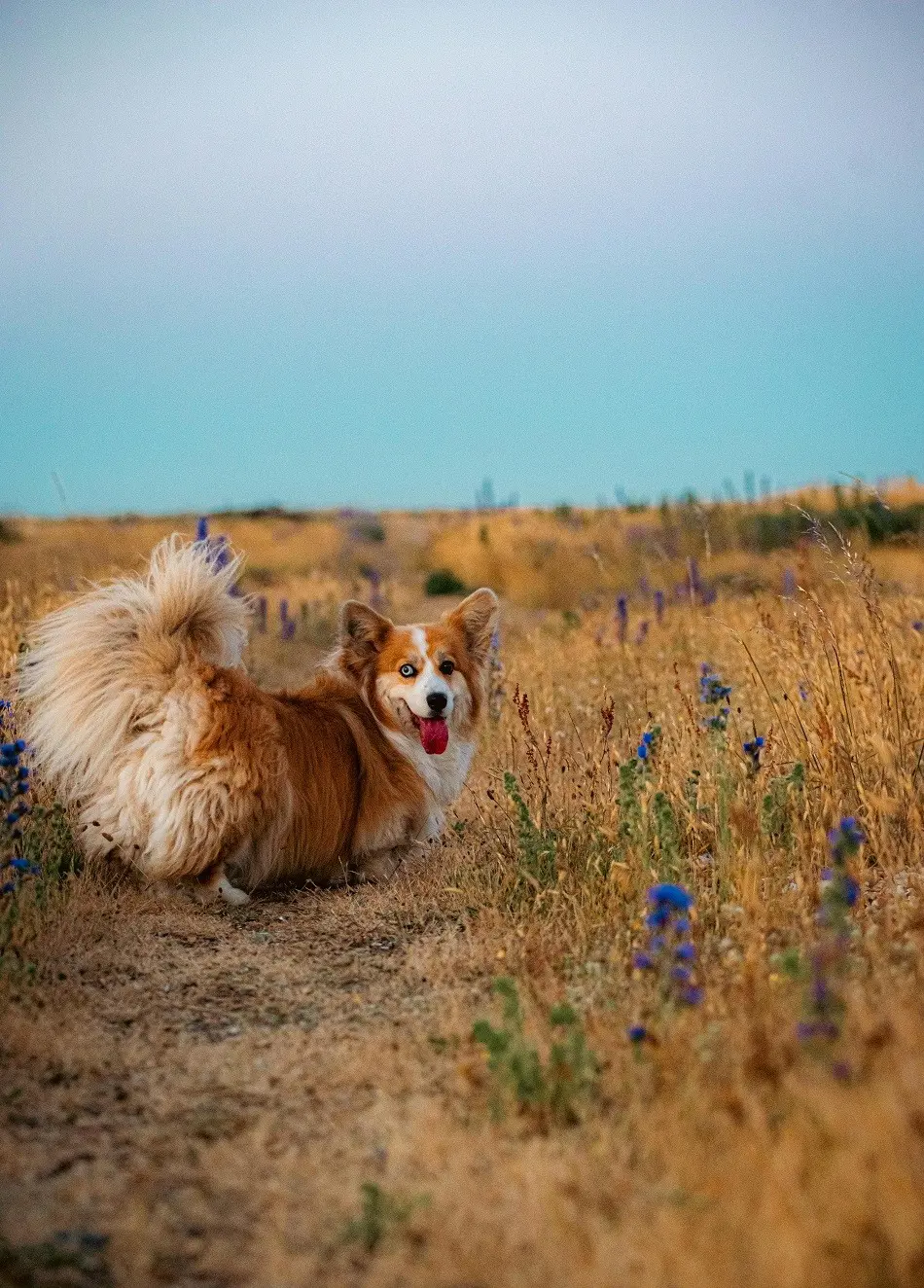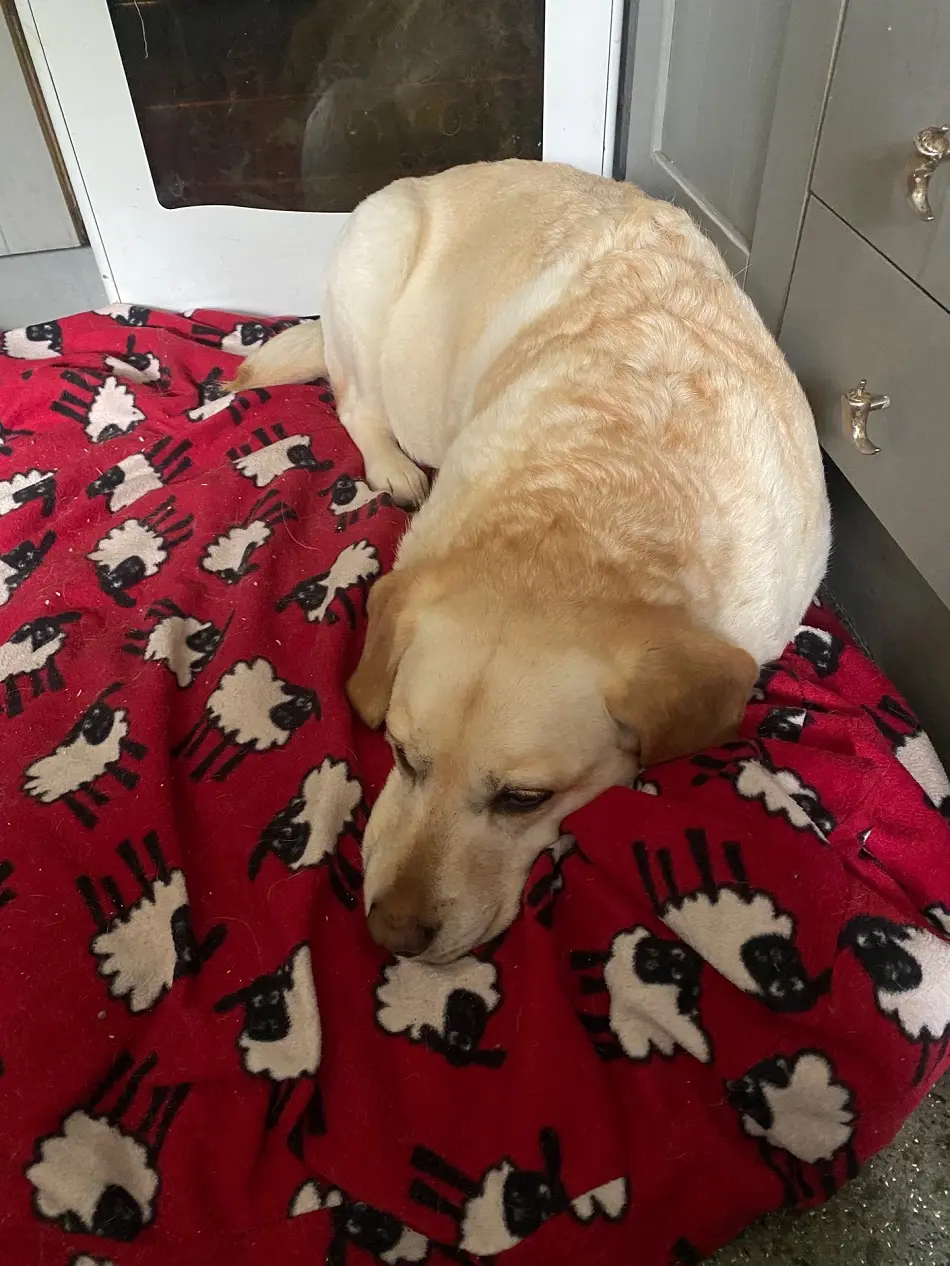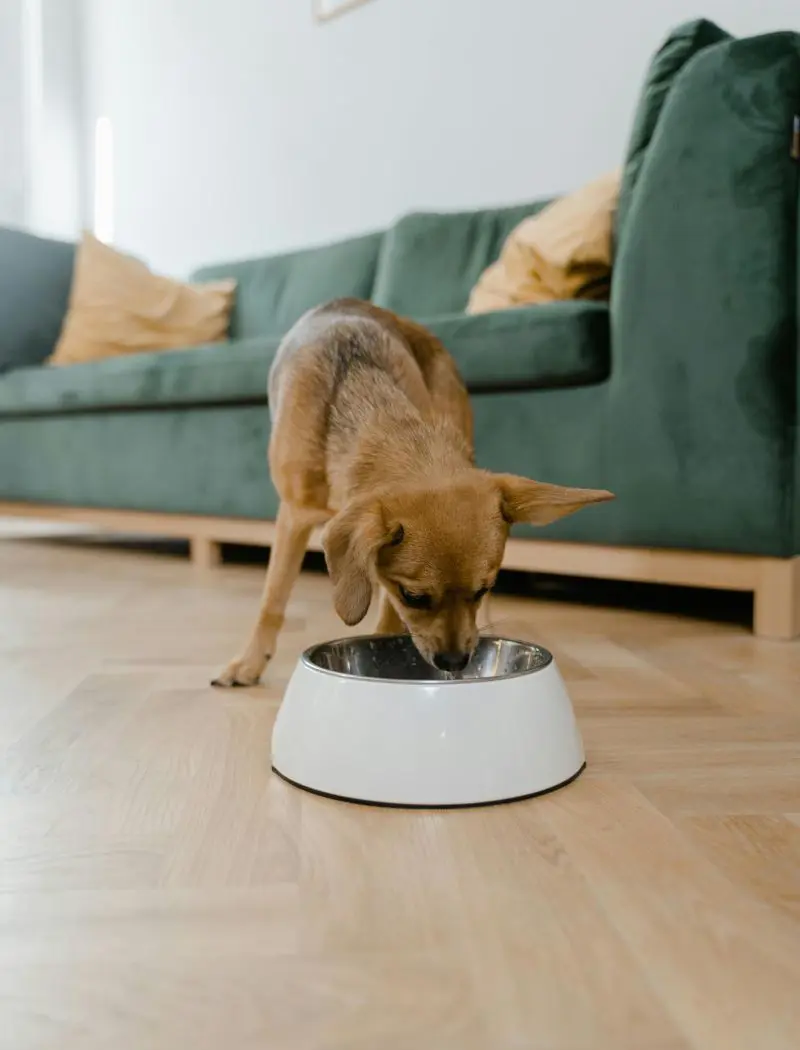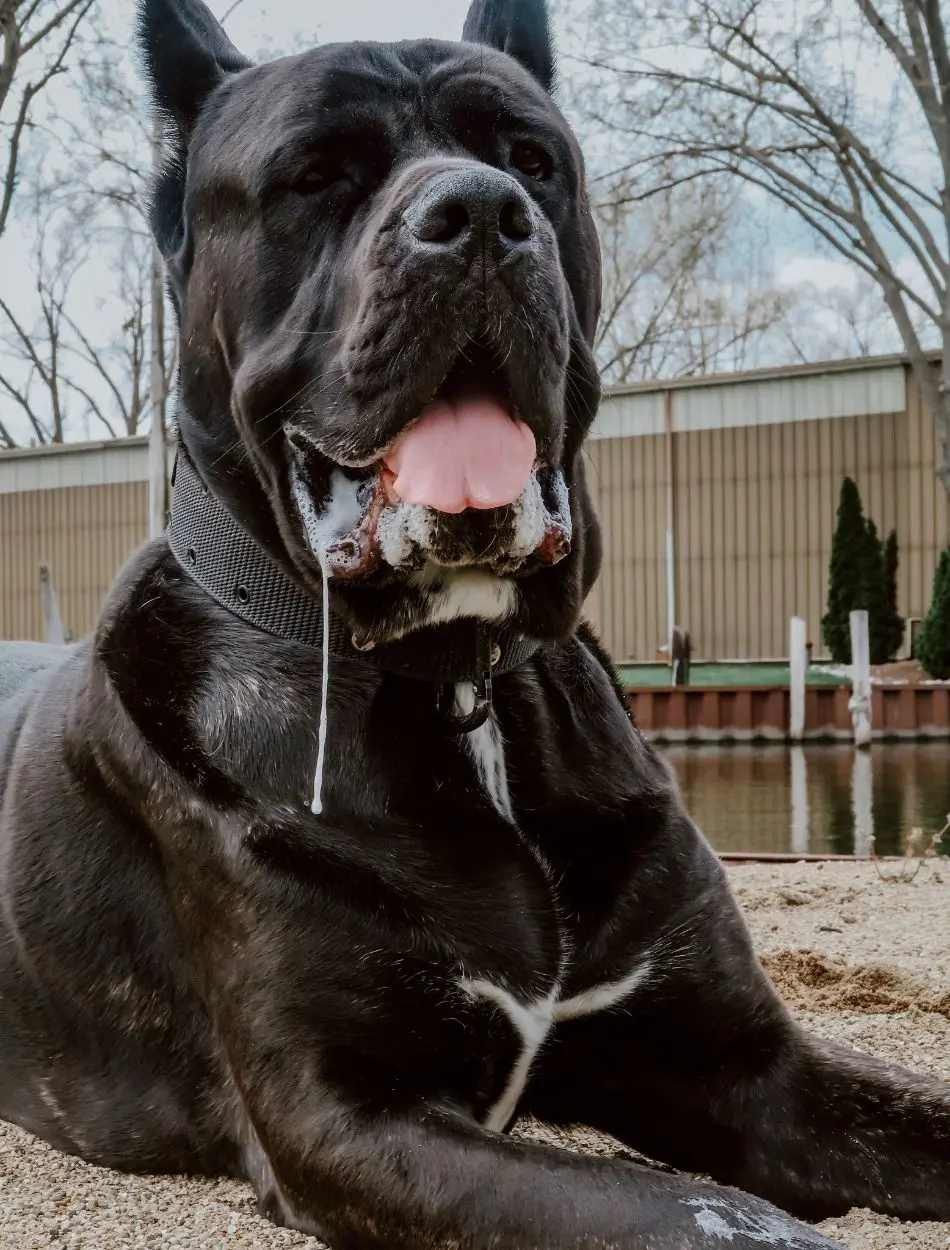18 Signs Of Food Allergies In Dogs

Food allergies in dogs are rapidly becoming recognized as a major health problem by pet owners. On-time identification of allergies is very important for avoiding long-term complications of health issues and maintaining your dog as a healthy and happy one.
Allergic reactions occur when the immune system misinterprets certain food proteins as foreign threats. Knowing these symptoms will help give you the upper hand in ensuring better health conditions and quality of life for your dog by making the most intelligent decisions about your dog's diet and health care. Here, we understand the 18 signs of food allergies in dogs.
1. Persistent Itching

You might find that your dog chases their tail non-stop, bites their fur, or licks incessantly on their skin, stubbornly focusing on the ears, feet, and belly. All this scratching is a result of inflammation caused by an allergy to one or more food proteins. This itching can become very sore, and because of it, your dog may even scratch open their skin which can result in secondary infections.
Knowing the exact allergens makes all the difference in fighting this allergic reaction. Consult with your veterinarian to determine which diet to try and discuss medication options that would work best for your dog. Regular bathing with medicated shampoo can be done to at least partially alleviate some of the itching, as well as protect your dog's skin from further damage.
2. Ear Infections
If your dog is shaking their head, scratching their ears excessively, or if a foul smell is emanating from there, they may have a food allergy. The allergic reaction creates inflammation inside the canals of the ears, which allows for an ideal environment for infections to develop and cause pain; hearing loss can also result if left unattended.
Any course of treatment for chronic ear infections will have to adopt a twofold approach: treating the infection at hand and underpinning allergies. Your vet may prescribe ear drops or antibiotics to treat the infection, but long-term relief lies in finding and removing that allergen from your dog's diet. This, together with consistent ear cleaning and a normal, non-allergenic diet, can help prevent new infections and keep him comfortable.
3. Gastrointestinal Problems

Gastrointestinal problems, such as vomiting, diarrhea, and excessive gas, are common symptoms seen in many cases of food allergies in dogs. Such happens when the immune system reacts to some food component undesirably, causing inflammation and irritation in the digestive tract. If your dog is frequently experiencing these complications shortly after meals, there might be a food allergy underlying it.
If gastrointestinal symptoms persist, discuss with your veterinarian whether to conduct a food trial. This entails feeding a limited ingredient or hypoallergenic diet before adding food back one at a time to find the allergen in question.
Taking away that offending ingredient can bring tremendous relief to their GI symptoms and overall health. Adding probiotics and digestive enzymes might also be indicated to promote gut health through the changeover.
4. Inflamed Skin
One of the most common signs of a food allergy in dogs is this red, inflamed skin, or dermatitis. This can be quite painful for your dog, and many dogs will incessantly scratch and lick at the affected areas. The inflammation is a result of an overactive immune response to one of the food proteins, which causes a disturbance of the natural skin barrier, making it more susceptible to secondary infections.
Treatment of red, inflamed skin requires a multi-modal approach. Changing your dog to a hypoallergenic or limited-ingredient diet can make a drastic difference in the risk of future allergic reactions. Your veterinarian may also recommend topical treatments, such as medicated shampoos or creams, to soothe the skin and promote healing. In more severe cases, oral medications may be needed to control inflammation and provide relief during the treatment of the underlying cause.
5. Paw Licking And Chewing

Excessive paw licking and chewing are some of the most common signs associated with food allergies in dogs. The reaction can come just from their immune system's reaction to an allergen in their food. All that constant licking or chewing really could lead to further irritation, inflammation, and even secondary infection, thus exacerbating the problem.
To address paw licking and chewing, it’s essential to identify and eliminate the food allergen causing the reaction. A hypoallergenic diet, along with anti-inflammatory or anti-itch treatments prescribed by your vet, can help alleviate the symptoms.
In the meantime, consider using protective booties or applying a bitter-tasting spray to deter your dog from licking or chewing their paws excessively. Regularly inspecting and cleaning your dog’s paws can also help prevent infections and keep them comfortable.
6. Chronic Diarrhea
Diarrhea, which is a prominent indication of food allergies in dogs, especially if the allergy involves the gastrointestinal system, is very debilitating in your dog. If not treated appropriately, it can lead to dehydration, emaciation, and other life-threatening diseases. Diarrhea finally results due to the inability of the body to digest some part of the food. This results in inflammation and turmoil in the digestive system.
To handle chronic diarrhea, you will have to work with your veterinarian to decide which allergen is the culprit. The elimination diet, in which specific ingredients will be added back one at a time, will pinpoint the causative agent of the diarrhea.
We want to ensure that, during this time, your dog remains hydrated and continues to receive proper nutrition to recover. If an allergy is detected and removed from a dog's diet over some time, these symptoms will alleviate and digestion will start returning to normal again.
7. Regurgitating After Meals

If your dog vomits right after eating, this could be a sign of food allergy. These symptoms are particularly worrying because, if they happen regularly, they can lead to weight loss, dehydration, and nutrient deficiencies. Vomiting generally takes place when the digestive system has some negative reaction to some ingredient that causes irritation or inflammation.
Resolve vomiting after meals by locating allergens and changing your dog's diet. You can follow an elimination diet as instructed by a veterinarian to determine exactly which food causes the reaction. By removing the allergen, you will witness some relief in your dog when it comes to the ability to retain food.
In some cases, your vet might also recommend some supplements or medication to help soothe the digestive tract while adjusting to the new diet.
8. Swollen Ears
The swelling of a dog's ears may be caused by a food allergy and is in most cases accompanied by redness, heat, and discomfort. Normally, this form of swelling is a result of inflammation in that the system tries to fight an allergen, causing the ears to be tender and sensitive to touch. Neglect of swollen ears may lead to chronic ear infections and other complications.
Consulting with the veterinarian is critical in the management of swollen ears because it rules out other possible causes and confirms whether the allergy is the cause. Treatments mostly include anti-inflammatory medications that provide relief by reducing swelling or assuaging discomfort and, most importantly, identifying and eliminating allergens from your dog's diet. Regular cleaning and monitoring will also help prevent flare-ups and keep your dog's ears healthy.
9. Hives Or Welt

Hives are welts that can crop up anywhere on a dog's body, typically red, raised bumps. The welts may then manifest as itching or discomfort for the poor pooch, where he is scratching or biting at his body. Hives are an immediate reaction to the food your dog eats and most of the time appear within a short period following the consumption of the offending food.
Treatment of hives and welts should involve prompt identification and removal of allergens. Your veterinarian may prescribe antihistamines or steroids to help reduce an allergic response and relieve your dog's discomfort.
Maintaining a hypoallergenic diet can also help prevent further outbreaks of the rash. Monitoring your dog closely for changes in the skin, as well as paying quick attention to new symptoms, can help keep their condition under better control.
10. Hair loss
Hair loss, especially when it occurs in patches, may signify a food allergy in dogs. This loss of fur frequently stems from your dog’s incessant scratching, licking, or biting at those itchy spots, which results in bald patches and additional irritation. Such a situation can be distressing for pet owners and quite uncomfortable for the dog, as it suggests that the underlying allergy is inflicting considerable skin discomfort.
First of all, to treat hair loss, the responsible allergen for the allergic reaction has to be identified. This can be a dietary change, most importantly to a hypoallergenic formula, which may help improve symptoms and allow your dog's coat to regrow.
In addition to dietary changes, your vet could add supplements like omega-3 fatty acids to help improve skin health and promote regrowth of hair. Regular grooming and gentle care in the affected areas might also facilitate recovery in your dog.
11. Chronic Flatulence

There's more to excessive flatulence in dogs than just discomfort and there can be possible signs of a food allergy. When your dog's digestive system is not digesting certain ingredients easily, it can increase gas discomfort and bloating. This will be more than a persistently uncomfortable feeling for your dog; it is much deeper and related to food intolerance.
Consider changing to a diet that removes many of the most common allergens and possibly tough-to-digest ingredients. Your vet may be able to recommend a limited-ingredient diet or a prescription food that is formulated for minimal impact on the digestive tract. Removing the offending allergens over time from the food should help reduce gas and improve the overall digestion of your dog, which is good for your dog and your home.
12. Behavioral Changes
In some cases, behavioral changes in your dog, such as irritability, lethargy, or anxiety, can be symptoms of food allergies. This happens because the discomfort brought on by the allergic reaction affects your dog's disposition and overall activity levels. A dog in pain or discomfort may show a decrease in activity, avoidance of large social gatherings, or even increased aggression.
Dealing with the behavioral changes that are due to a food allergy is to identify specific allergens and change your dog's diet to alleviate the symptoms. If your dog is in less discomfort, you probably will see a motivation change for the better. Further promote your dog's mental and physical health by instituting a steady routine, ensuring proper exercise, and keeping the diet appropriately balanced as they recover from the effects of the allergy.
13. Recurrent Hot Spots

It is an itchy spot and extremely painful sores that develop when dogs constantly lick, scratch, or bite them, hence causing irritation and infection in the area. This makes hot spot treatment quite challenging and typically requires veterinary care to ensure proper healing, especially if it recurs.
Managing hot spots involves two lines of treatment: the immediate skin infection and the food allergy that is underlying, triggering the irritation. Your veterinarian may prescribe antibiotics or topical treatments to help reduce hot spots while they recommend dietary changes so that flare-ups in the future can be avoided.
Proper grooming, soothing shampoos, and close monitoring of your dog's skin condition can reduce the likelihood of hot spots appearing.
14. Sneezing and Coughing
Excessive sneezing and coughing in dogs could both be symptoms of an allergic response, including food allergies. These are respiratory symptoms that occur when the immune system reacts with allergens, eventually causing airway inflammation. While such symptoms are often linked to environmental allergens, the role of food can never be underestimated when severe allergies are present.
To address the sneezing and coughing brought about by food allergies, work with your veterinarian to identify the exact source of the allergen and change your dog's diet accordingly. Antihistamines and other medications may be recommended to help alleviate symptoms as the underlying cause is addressed. Additionally, ensuring that your dog's environment is free of other irritants, combined with providing a balanced diet, can go a long way to reduce respiratory symptoms and improve your dog's overall health rating.
15. Poor Coat Condition

Coat conditions are closely associated with overall nutrition, and an allergic reaction can certainly decrease the health of the skin and hair follicles, causing the quality of the coat to go down as a result. This change regarding the health of the coat is always a concern specifically to pet owners because it normally means that your dog is not getting the best substances that it needs.
The skin condition in your dog's coat can be improved by identifying the allergen responsible for the reaction and making appropriate dietary adjustments. A balanced, hypoallergenic diet normally should contain a lot of essential fatty acids, including omega-3 and omega-6, which will help your dog's coat to restore its natural gloss. Skin health is also promoted through regular grooming by moisturizing shampoos and promoting a lustrous glossy coat so your dog can be at its best.
16. Watery Eyes
Excessive tearing, or watery eyes, can be a sign that a dog has a food allergy. The condition is known as epiphora, which develops because of inflammation of the tear ducts by an allergen.
Although watery eyes are often attributed to allergens in the environment, food allergies are also to blame in many cases for this condition, which can contribute to eye discomfort and even infections.
Treatment may be affected by allergen identification and elimination from the diet. Topical soothing medications may be needed to squash the irritation that tends to make the animal more sensitive overall to infections in the eye. Regular cleaning and observation of changes in the eyes can prevent other problems and keep your dog more comfortable.
17. Difficulty Breathing
Difficulty breathing, also known as respiratory distress, serves as a critical indicator of a food allergy in dogs, demanding prompt attention. These alarming symptoms arise when the immune system reacts to an allergen, causing swelling in the airways and hindering your dog’s ability to breathe. Given the urgency of respiratory distress, it is paramount that a veterinarian address this medical emergency without delay.
To prevent another frightening episode of respiratory distress, it's vital to determine the food allergen and eliminate it from your dog's diet. The veterinarian will suggest allergy testing or a prescription diet that minimizes allergic reactions. Take measures to ensure your dog has no contact with the known allergens, keep a safe environment without allergens, and ensure security for their respiratory health.
18. Lethargy

Lethargy, that common feeling of being overtired, could be a sign that your dog is dealing with a food allergy. When the dog's body is continually fighting the reaction to an allergen, it can bring on overall tiredness and a pronounced lack of energy. This can impact your dog's daily routine and its quality of life, making it important to address what causes the allergy.
Discuss with your veterinarian the allergens, make the necessary changes, and result in a boost in energy levels and excitement toward playing and exercising with your dog. Nutritious meals and a good rest, accompanied by exercise now and then, are other proper ways to help your dog recover, maintain a good life, and stay active.
Recent posts
Dogs
Why Is My Dog Panting? 18 Reasons For Breathing Fast
Dog owners, those in tune with their pets, can often notice a change in their companion’s behavior. When unwell or scared, some dogs hide while others seek solitude. Similarly, panting is a normal sign of tiredness or lethargy, but can also imp...
10 Reasons Behind Dogs Chewing And Licking Their Paws
Some of the most harmless behaviors dogs depict are chewing on their paws. But if this obsession catches onto your pup, well, that raises a couple of curious eyebrows. Your dog's tendency towards chewing and licking can affect general health and well...
18 Reasons Why Your Dog Is Not Eating
A skipped meal here or there is normal, but your dog consistently refusing food is the cause of concern. The reasons range from dietary issues to more serious health conditions and behavioral issues. The dog may be a picky eater or there might be som...
17 Causes Of Seizures In Dogs
Don't dismiss your pet dog's uncontrolled twitching movements as harmless shivering - you may be bearing witness to the classic signs of a seizure. These sudden and involuntary electrical disturbances can drastically impact a dog's health and even ch...
18 Reasons Why Your Dog Is Drooling So Much
While drooling in dogs is perfectly normal in certain situations, excessive or continued drooling may hint at a more serious issue that requires attention. Once you know the probable causes of this drooling in your dog, you can take some necessary st...
18 Reasons On Why Is My Dog Limping
A dog limping can be a cause of concern and cause stress to owners. It is not normal dog behavior and can be a sign of health problems in dogs. Understanding why your dog is limping is important to cure this problem. This article discusses 18 reasons...






